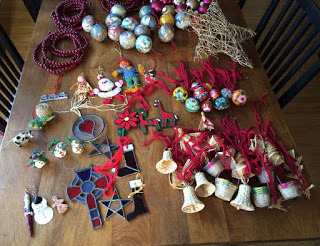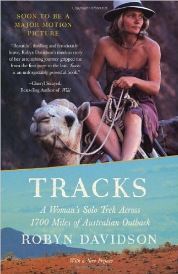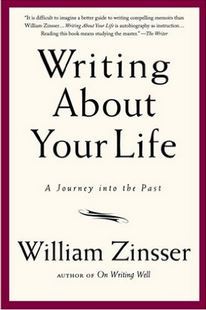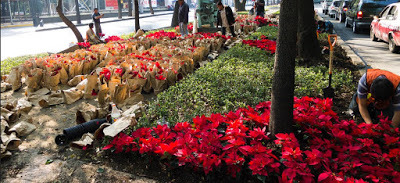Arleen Williams's Blog, page 15
February 22, 2016
The Past is Never Dead. It's not Even Past.
I recently read Paula McLain's memoir, Like Family - Growing Up in Other People's Houses. Abandoned by both parents, McLain and her sisters grew up in foster care. As the middle sister, McLain offers her perspective of their shared experience. I was drawn in and held tight by McLain's vivid, flowing prose, her unflinching honesty, and her tenacity in overcoming her childhood challenges as a ward of the Fresno County, California court.
As a memoirist struggling with the family dynamics of publishing stories of shared experiences, A conversation with Paula McLain in the final pages caught my eye. This particular question and answer feel so close, so real, I'd give my right arm to have written it, to be able to write it, for it to be my own truth. While the first half of the quote is not my truth, the second half haunts me. To deal with those haunts, I suppose I need a reality check now and again. I'm grateful to McLain, and to Faulkner, for just that.
 How do your sisters feel about Like Family? How were your personal experiences different from those of your sisters?
How do your sisters feel about Like Family? How were your personal experiences different from those of your sisters?My sisters have been very supportive of the book all the way along, and proud of me for undertaking the project. I'm deeply grateful for this, particularly since I know they would never have elected to be revealed in such a way. Both of them have said that reading certain passages - even from the distance of twenty-some years, and the additional buffer that the telling was my version of events, not their own - was like reliving memories, experiencing them and the attendant pain and disappointment afresh. Being aware of their feelings has caused me some unease. My sisters have their own versions of our childhood, as well as their own strategies for dealing with the fallout. My sense is that they both feel more comfortable with the past behind them, or at least at a manageable distance from themselves. While I respect this, I'm more inclined to agree with Faulkner, who said, "The past is never dead. It's not even past."
Published on February 22, 2016 19:10
February 15, 2016
History Repeats
 My husband is a history buff. There are countless documentaries awaiting him in My List on Netflix. More recommended each time we open the app: Because of your interest in. The other night I plopped down at his side as he watched the conclusion of Ken Burns' The Roosevelts: An Intimate History.
My husband is a history buff. There are countless documentaries awaiting him in My List on Netflix. More recommended each time we open the app: Because of your interest in. The other night I plopped down at his side as he watched the conclusion of Ken Burns' The Roosevelts: An Intimate History.That's when I learned Eleanor Roosevelt wrote a column called My Day six days a week for twenty seven years between 1935 and 1962. On January 23, 1939 she wrote the quote below, a quote as fitting today as it was when it appeared in her column seventy seven years ago, the eve of U.S. involvement in WWII.
...What has happened to us in this country? If we study our own history we find that we have always been ready to receive the unfortunates from other countries, and though this may seem a generous gesture on our part, we have profited a thousand fold by what they have brought us. - Eleanor Roosevelt
Published on February 15, 2016 10:08
February 8, 2016
Muddling Memoir: Confession
I began the Muddling Memoir series on November 16, 2015 thinking I'd track the writing of my third memoir from beginning to end. But here's my confession. In the last thirteen weeks I've spent more time focused on process than on memory. An avoidance mechanism, I fear, because I cannot say that all these memories are happy ones. But all I learned and experienced in the process, made every moment worthwhile. Made me who I am today.
They are memories of a young woman trying to find her way alone in Mexico City in the 1980s. The memories of a young woman searching for self and love. A young woman who felt more comfortable in a foreign culture, speaking a new language than in her own.
I will likely return to this series with updates from time to time on the progress, but for now I need to take a break from this self-imposed weekly post schedule. I need to shift my focus from describing and analyzing the process toengaging in the process of writing memoir. I need to write.
Book marketing gurus tell writers we need to blog on a weekly basis to build readership. With less than a thimbleful of knowledge about marketing, I cannot argue with that. They also tell us that getting out the next book is essential. One of the realities most writers face is the challenge of prioritizing such contradictory activities within the limitations of the 24-hour day.
Thank you for reading. Please, consider keying your email into the subscription box in the upper right corner of this page so you'll be notified of future posts.
Prior posts in the Muddling Memoir series:
BeginningsJournals
Letters
Perspective
A TimelineClosure? Never.La Flor de Noche Buena
Greats and Guides VinylTrusting the Process So Here's What I Did Why? Photographs
Published on February 08, 2016 06:20
February 3, 2016
Muddling Memoir: Photographs
I've spent the past week looking at slides of my Mexico years. I didn't set up the projector and screen, though I still own both. Instead, I used a small slide viewer. I set in a stack of thirty to forty year old slides and pushed them through the lighted cavity. One by one images of Mexico slid before me. The long dark hair and sad eyes of a young woman on the cliffs above the Pacific just before leaving Santa Cruz, California. The images of peasants and children who populated the street corners not only of Mexico City, but of villages from the northern border along both coastlines and south to Oaxaca. Images of farmers tending their fields and construction workers building the vast Mexico City subway system, humble churches and elaborate cathedrals, fortress-like museums and open-air markets.
 In the early 1980s, long before digital cameras or cell phones, I splurged on a small 35 mm Olympus I carried with me wherever I went. What I didn't capture and develop in black and white, I recorded on color slides. I have hundreds of photographs of strangers, and even a few of myself. What I have in limited quantity are photos of the people who populated my life. I have Cathy in Santa Cruz, but not in Mexico City. I have Evelia and Judi, a few of friends at my Mexican wedding, and even a shot of my ex-husband painting our apartment for my sister's visit. But most of the time my camera recorded strangers and the places they inhabited. Does this show where my heart lay? Were culture, place, and local inhabitants what felt important? The extremes wealth and poverty what struck me?
In the early 1980s, long before digital cameras or cell phones, I splurged on a small 35 mm Olympus I carried with me wherever I went. What I didn't capture and develop in black and white, I recorded on color slides. I have hundreds of photographs of strangers, and even a few of myself. What I have in limited quantity are photos of the people who populated my life. I have Cathy in Santa Cruz, but not in Mexico City. I have Evelia and Judi, a few of friends at my Mexican wedding, and even a shot of my ex-husband painting our apartment for my sister's visit. But most of the time my camera recorded strangers and the places they inhabited. Does this show where my heart lay? Were culture, place, and local inhabitants what felt important? The extremes wealth and poverty what struck me?
Waves of memory wash over me. I am drowning under those waves, yet I need to stay in the turbulence, work within it until words make sense and memories fit together with the perfection of a jigsaw puzzle. I must give myself time to feel the joy and pain, the adventure and loss. I jot notes, scribble startlines, set a timer, put pen to paper. And repeat. From the muddled mess of memory I trust a story will emerge.
Prior posts in the Muddling Memoir series:
BeginningsJournals
Letters
Perspective
A TimelineClosure? Never.La Flor de Noche BuenaGreats and Guides VinylSo Here's What I Did Why?
 In the early 1980s, long before digital cameras or cell phones, I splurged on a small 35 mm Olympus I carried with me wherever I went. What I didn't capture and develop in black and white, I recorded on color slides. I have hundreds of photographs of strangers, and even a few of myself. What I have in limited quantity are photos of the people who populated my life. I have Cathy in Santa Cruz, but not in Mexico City. I have Evelia and Judi, a few of friends at my Mexican wedding, and even a shot of my ex-husband painting our apartment for my sister's visit. But most of the time my camera recorded strangers and the places they inhabited. Does this show where my heart lay? Were culture, place, and local inhabitants what felt important? The extremes wealth and poverty what struck me?
In the early 1980s, long before digital cameras or cell phones, I splurged on a small 35 mm Olympus I carried with me wherever I went. What I didn't capture and develop in black and white, I recorded on color slides. I have hundreds of photographs of strangers, and even a few of myself. What I have in limited quantity are photos of the people who populated my life. I have Cathy in Santa Cruz, but not in Mexico City. I have Evelia and Judi, a few of friends at my Mexican wedding, and even a shot of my ex-husband painting our apartment for my sister's visit. But most of the time my camera recorded strangers and the places they inhabited. Does this show where my heart lay? Were culture, place, and local inhabitants what felt important? The extremes wealth and poverty what struck me? Waves of memory wash over me. I am drowning under those waves, yet I need to stay in the turbulence, work within it until words make sense and memories fit together with the perfection of a jigsaw puzzle. I must give myself time to feel the joy and pain, the adventure and loss. I jot notes, scribble startlines, set a timer, put pen to paper. And repeat. From the muddled mess of memory I trust a story will emerge.
Prior posts in the Muddling Memoir series:
BeginningsJournals
Letters
Perspective
A TimelineClosure? Never.La Flor de Noche BuenaGreats and Guides VinylSo Here's What I Did Why?
Published on February 03, 2016 16:31
January 25, 2016
Muddling Memoir: Why?
The thing about memoir is that whatever you write, someone is likely to disagree with you, someone may be angered, someone might be hurt. To write memoir, you need a clear understanding of why you write and why you publish. Odds are you will be asked, perhaps even attacked for your story. To read memoir, you need to be aware that you are reading a single version of a story. If each character in the memoir were to pen their own story, they would see the events through different prisms. If you were to rewrite your story, the versions might differ as you wrote from new perspectives of age and experience.I believe in honesty and truth.I believe I cannot be a complete human without examining my life with a clear eye and, at times, brutal honesty. I write memoir because I need to understand myself and my past, my decisions and my motivations. I write to know who I am and where I stand in this crazy world. Some may say, "Fine. Write. But why publish?"That's a tough question, made more so if you believe your memoir may cause distress or that your version of life lived differs from that of those you cherish.I publish because without publishing, I deny my voice. If I stash a manuscript in a drawer and try to forget it's there, I am censoring not only my words, but my essence, my life, my value. If I allow myself to be swayed by letting others dictate what I can publish, I forfeit my voice. By forfeiting voice, I forfeit self.This is a tough challenge for the memoirist. No matter how careful and sensitive, honest and kind, you try to be, no matter how deeply you dug to find your personal truth, there's a good chance someone will call you a liar. Someone will deny your right to tell your story. Are you strong enough? Can you withstand the pain?Why do you write memoir? Why do you read it? Why are you reading this blog series (I'm glad you are - I read memoir for truth. I read memoir to see the world of another and understand the decisions made, the how and the why of their choices. I read memoir just as I read fiction, for the poetic beauty of a story well-told. Some value spoken over written word. Some can express themselves best through conversation. I am not one of them. I struggle to express my thoughts and ideas, my truths and passions, orally. I need pen and paper to organize my brain, to put words to passions, to find my own truth. It is that truth that I believe makes me a better human being even as I recognize that truth changes, that memory itself changes truth. I know I must continue to write even when the path is blurred and full of emotional potholes. To do less is to deny my humanity.
Prior posts in the Muddling Memoir series:
BeginningsJournals
Letters
Perspective
A TimelineClosure? Never.La Flor de Noche BuenaGreats and Guides VinylSo Here's What I Did
Published on January 25, 2016 20:10
January 18, 2016
Muddling Memoir: So Here's What I Did
After my last post , I realized I'd gotten ahead of myself on this project. I did exactly what I've taught should not be done. I focused on structure before story. I created a timeline (or tried), before I knew the spine. I needed far more exploratory writing before I could make the most basic, fundamental decision: am I writing memoir or fiction or some kind of hybrid?
At the moment, I'm feeling a strong pull from Jeannette Wall's "true-life fiction." I like the logic of a fictionalized story of lives lived. In Half Broke Horses, Walls writes of her grandmother. She didn't live her grandmother's life but bases her story on a lifetime of family lore.
 The years I'm exploring for my own project are more recent, yet many of the characters are either no longer with us or impossible to access. To complicate matters, memories of my life in Mexico seem overshadowed by those of the traumatic years that followed. I find myself struggling as I write, questioning if something happened as I remembered it happening or only as I remember the memory of it colored and shaped by the intervening years. Can one look back and claim to still see clearly through the eyes of a forty-year-younger self?
The years I'm exploring for my own project are more recent, yet many of the characters are either no longer with us or impossible to access. To complicate matters, memories of my life in Mexico seem overshadowed by those of the traumatic years that followed. I find myself struggling as I write, questioning if something happened as I remembered it happening or only as I remember the memory of it colored and shaped by the intervening years. Can one look back and claim to still see clearly through the eyes of a forty-year-younger self? In her essay, "On Keeping a Notebook," Joan Didion wrote, I tell what some would call lies. “That’s simply not true,” the members of my family frequently tell me when they come up against my memory of a shared event. “The party was not for you, the spider was not a black widow, it wasn’t that way at all.” Very likely they are right, for not only have I always had trouble distinguishing between what happened and what merely might have happened, but I remain unconvinced that the distinction, for my purposes, matters.
 So here's what I did this past week. I put aside the timeline, and journal transcripts, and beginnings of a manuscript. I took up pen and notebook (this very pen and notebook where I scribble these thoughts while sipping cappuccino at the Frye Art Museum Cafe). I made a list of startlines - sentences based on a single flash of memory that can be used to jump start a timed-writing session. A technique I learned in 2002 from
Robert Ray and Jack Remick
when I first began writing. A technique that led to the completion of The Thirty-Ninth Victim. A technique I allowed to slip from my practice.
So here's what I did this past week. I put aside the timeline, and journal transcripts, and beginnings of a manuscript. I took up pen and notebook (this very pen and notebook where I scribble these thoughts while sipping cappuccino at the Frye Art Museum Cafe). I made a list of startlines - sentences based on a single flash of memory that can be used to jump start a timed-writing session. A technique I learned in 2002 from
Robert Ray and Jack Remick
when I first began writing. A technique that led to the completion of The Thirty-Ninth Victim. A technique I allowed to slip from my practice.I wrote every day last week. Sometimes before work, other days at work, still others after. I wrote when I had 30-minute moments. As I wrote, new fragments of memory emerged - long forgotten faces, places, events - and I jotted new startlines. I can't guarantee that all I wrote really happened or "merely might have happened," but for now it doesn't matter to me. What matters is to continue writing until the story and genre reveal themselves.
Prior posts in the Muddling Memoir series:
BeginningsJournals
Letters
Perspective
A TimelineClosure? Never.La Flor de Noche BuenaGreats and Guides VinylTrusting the Process
Published on January 18, 2016 10:11
January 11, 2016
Muddling Memoir: Trusting the Process
Okay. I'll admit it . I'm feeling a bit lost. The holidays ended and winter quarter began. The skies are gray and the days are cold. I've got another miserable cold I can't seem to beat, but what I don't have is a story. I'm not writing. There, I said it. I'm not writing. Sure, I'm reading and thinking. I'm tippy-toeing around the periphery of faded memory, but I haven't found the door yet. I haven't entered, and I haven't discovered the story that lies within.
Is this what some refer to as writers' block? Or, am I just tired, bored, lazy? Or perhaps Pretense finally caught up with me, now tapping a gnarled finger on my forehead repeating: "You can't write. You have nothing to say. Just give it up and go watch the Seahawks game or a Hallmark movie."
Don't get me wrong. I have nothing against the Seahawks and Hallmark brings back warm memories of watching with my mother, explaining the simple plot lines to a brain befuddled by dementia. But neither Seahawks nor Hallmark, teaching myself to sketch nor learning what I can about marketing, or even repotting house plants and dreaming of future home remodels should pull me away from the writing. They never have before.
I've lived through a lifetime of gray, depressing Seattle winters. I've started a good ninety new college terms in my long career, and I've dealt with more head colds and sinus infections than reasonable for a healthy woman. So what gives? Why am I struggling with this story? Why can't I find it?
The thing about writing memoir, about muddling around in the past, is that sometimes it hurts. Sometimes we just don't want to go there and our brain and body put up every roadblock imaginable to avoid it. Some folks manage to navigate through life with little more than a glance over the shoulder. Others spend large chunks of time examining the past, trying to make sense of life lived, decisions made, people and places experienced. Unless life has been fairytale-perfect, that examination can be tough. We go through life hearing things life "you think too much" or "you're too self-absorbed" or "it's not your problem." Maybe all of that's true. Maybe it's not. Maybe we're memoirists and we have stories to tell.
So why am I struggling to find that story? Why the avoidance? Maybe I'm just a lazy sod who wants nothing more than a snorkeling vacation in Hawaii or the Bahamas. But as I read the signs and examine the more recent years - the last thirteen since I began writing by penning my first memoir - I know this is just a phase. I need to trust the process. That same process that has given me other stories. I need to put pen to paper for thirty minutes every morning and see what shows up on the page. The story will emerge if I trust the process. The alternative? Toss pen and notebook in the trash and walk away. But I know where that would lead me and it's not a pretty place.

Prior posts in the Muddling Memoir series:
BeginningsJournals
Letters
Perspective
A TimelineClosure? Never.La Flor de Noche BuenaGreats and Guides Vinyl
Published on January 11, 2016 17:20
January 4, 2016
Muddling Memoir: Vinyl
I am not a music person, not the kind who listens 24/7, wears earbuds to exercise or to block out ambient noise. Our home is quiet. When I write there is silence but for the voices in my own brain. When I walk or cycle, it is those voices or the birds or the wind that entertain. NPR plays during my short commute to and from work. When I put on music, I want to listen, truly listen, but I find myself doing very little listening these days.
Yet as I untied each tiny bow on every Mexican ornament from the dry fir and pack away Christmas for another year, I made plans. The turntable would fit on the sideboard. I'd find some sort of decorative container, something other than cardboard, for the vinyl. I wasn't certain what I'd saved in the boxes under the stairs. It would be like Christmas all over again this opening of storage boxes to find LPs stored for decades silently awaiting resurgence.
 When my husband and I married almost twenty-seven years ago, we merged our LP collections. I wonder when I will have time to listen to all that music. I've begun to sketch. A new hobby. A skill I hope to develop. I wonder if sketch pad and vinyl complement each other better than writing and music do for me. I think yes. There are no voices in my brain, no images flooding behind my eyelids like a movie on a screen when I draw.
When my husband and I married almost twenty-seven years ago, we merged our LP collections. I wonder when I will have time to listen to all that music. I've begun to sketch. A new hobby. A skill I hope to develop. I wonder if sketch pad and vinyl complement each other better than writing and music do for me. I think yes. There are no voices in my brain, no images flooding behind my eyelids like a movie on a screen when I draw.The tree down. The house cleaned. My husband brought out the turntable and set it up only to discover it no longer functioned. The rubber belt, a bit like a large rubber band, had dried to fragments. He ordered a replacement. When it arrives, I will listen to the music of my years in Mexico and welcome the memories I am confident will emerge.
Prior posts in this series:
Muddling Memoir: Beginnings
Muddling Memoir: Journals
Muddling Memoir: Letters
Muddling Memoir: Perspective
Muddling Memoir: A TimelineMuddling Memoir: Closure? Never.MuddlingMemoir: La Flor de Noche BuenaMuddling Memoir: Greats and Guides
Published on January 04, 2016 06:25
December 28, 2015
Muddling Memoir: Greats and Guides
I don't know who coined the phrase "Read 100 books to write 1" or more specifically "Read 100 books in your genre to write 1" but it rings true to me. When I'm writing fiction, I find myself reading fiction. Now, as I return to memoir, I'm reading every memoir I get my hands on. Recommendations? Send them my way!
When asked about favorite books, I usually respond that whatever I'm reading is my favorite. Which is sort of true and sort of an excuse because I never hold names or titles on the tip of my tongue. So for this end of 2015 post, I thought I'd share a few favorite memoirs. I realize Google Knows All and a simple search provides a far more complete list than any I can provide, but still.
The most renown will appear on any list. In no particular order, I've enjoyed Mary Karr, Frank McCourt, Jeannette Walls, Susanna Kaysen, Rick Bragg, Lauren Slater, Alexandra Fuller, and others.
Then there are the novelists like Gabriel Garcia Marquez, Isabel Allende, Amy Tan, Ann Patchett, and Joan Didion who have penned profound memoirs.
Recently a writer friend spoke of the genre of each memoir, what others might refer to as the spine. I remembered how annoyed I was when The Thirty-Ninth Victim was released in 2008 and readers referred to it as true crime or book stores shelved it in the true crime section. And yet that's exactly what it is: true crime memoir.
I enjoy reading lesser known memoirists, and now I challenge myself to identify the story within the memoir. Here are a few of my favorites:
 Robyn Davidson's trekking adventures, Tracks and Desert PlacesMishna Wolff's multicultural childhood, I'm DownJane Bernstein's true crime memoir, BereftDani Shapiro's family tragedy, Slow MotionLoung Ung's memories of genocide, First They Killed My Father
Robyn Davidson's trekking adventures, Tracks and Desert PlacesMishna Wolff's multicultural childhood, I'm DownJane Bernstein's true crime memoir, BereftDani Shapiro's family tragedy, Slow MotionLoung Ung's memories of genocide, First They Killed My FatherThe list could go on and on. And it should. And it does. These are only a few I enjoy enough to keep on my shelves so I can return to them whenever inclined. A quick look at the back of Mary Karr's The Art of Memoir provides a list many of us may never work our way through.

For those of you writing, or thinking about writing, your own memoir, here are a few of my favorite How Tos. Mary Karr's The Art of Memoir is an interesting read, but there are others that I find more instructive. My all time favorite is William Zinsser's Writing About Your Life. I also return to Judith Barrington's Writing the Memoir: From Truth to Art and Mary Pipher's Writing to Change the World. And finally, though intended for K-12 teachers, I have found gems in Katherine Bomer's Writing a Life: Teaching Memoir to Sharpen Insight, Shape Meaning--and Triumph Over Tests.
Read 100 to write 1. Or, don't write anything at all. Just curl up in your favorite chair, maybe light a fire, maybe brew a cup of tea or pour a glass of wine, and read. It's a great way to spend an hour, a new year.
Happy 2016!
Prior posts in this series:
Muddling Memoir: Beginnings
Muddling Memoir: Journals
Muddling Memoir: Letters
Muddling Memoir: Perspective
Muddling Memoir: A TimelineMuddling Memoir: Closure? Never.MuddlingMemoir: La Flor de Noche Buena
Published on December 28, 2015 08:36
December 21, 2015
Muddling Memoir: La Flor de Noche Buena
Memories assault us when we're least expecting. It's the memoirist's job to capture them as they flitter through the brain's clutter. Some writers carry notepads, others keep journals, still others sink deep into morning pages. The task of catching fleeting memories is a slow, but essential process.
As I venture into a new project, I rely on the journals and letters I've already mentioned in this blog series as well as the glorious flashes of sight, sound, smell that arise more frequently the deeper I dig into memories. The triggers? A total mystery. An example:
Thanksgiving day my daughter's future sister-in-law arrived to the festivities with a brilliant poinsettia she pressed into my arms. In a wash of memory, I was thirty-six years younger, alone in Mexico City. It was November 1979, my first winter in the city. I was still ignorant about most things Mexican. I didn't know poinsettias were an indigenous plant brought north in 1828 by Joel Roberts Poinsett, the first United States Ambassador to Mexico (1825-1829), and arrogantly renamed in his honor. I didn't know the glorious Flor de Noche Buena grew as trees throughout Central Mexico. I didn't know that the floating gardens of Xochimilco, then on the southern edge of the city, were renown for the cultivation of these plants. I didn't know that in early December each year the largest city in the world was transformed by glorious color.

It happened overnight, or so it seemed in early December 1979. I have no memory of the day, the time or even where I was. It must have been somewhere along the glorious Paseo de la Reforma, a wide avenue as elegant as the Champs Elysees but not as commercialized. Not then. I was on foot, probably emerging from the subway on my way to a teaching assignment when I saw them. I froze as people jostled around me. I still feel the press of their bodies, smell the mingled scent of perfume and sweat. I stopped in place overwhelmed by what I saw. The concrete world of Mexico City I'd grown accustomed to over the past year was alive with color. The median running between the opposing lanes of traffic for as far as the eye could see were mounded beds of fiery red Noche Buenas.
I do not have a photo of what I saw that day, but here is a glorious shot of magic in the making from Google images:
 Happy Holidays!
Happy Holidays!Prior posts in this series:
Muddling Memoir: Beginnings
Muddling Memoir: Journals
Muddling Memoir: Letters
Muddling Memoir: Perspective
Muddling Memoir: A TimelineMuddling Memoir: Closure? Never.
Published on December 21, 2015 10:58



